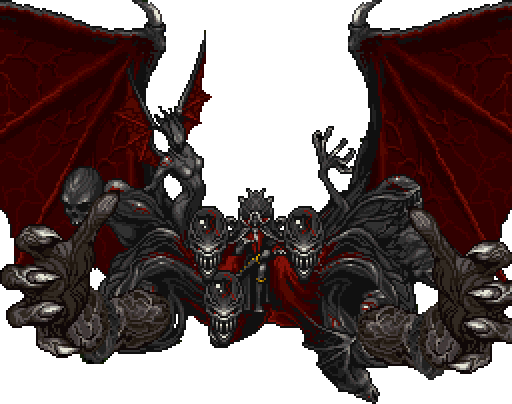

![]() Dracula
Dracula ![]()
The fictional character Count Dracula is one of the most enduring in the history of film and literature, so much so that it was only a matter of time before the prolific king of vampires crossed his way over into the new medium, the world of video games, and directly into a series made specifically in his honor (Akumajou "Dracula," as it's called in Japan). In Konami's game, Dracula was presented as the vengeful servant of Satan whose only goal was to drown the world in darkness. When the series was localized as "Castlevania" in the West, where video games were viewed more as a children's activity, the tone of its story shifted more toward the conventional theme of "good versus evil" and the perennial struggle between the Belmont family and Count Dracula, whose characterization skewed more toward the lightweight monster-movie villain as portrayed in those old black-and-white films. As the medium matured and began expanding its reach, Castlevania's creators became more comfortable with the idea of sharing their original vision for Dracula, who we've since learned is an amalgamation of the two noted variants--his plight reminiscent of the one suffered by the tragic vampire menace from the novel Bram Stoker's Dracula, which rendered the Count as an extension of real-life tyrant Vlad Tepes; and his physical appearance matching that of the smooth, calculating horror-movie icon as performed by Bela Lugosi.
Of course,
since those same creators never bothered to explain its character's real
backstory, which entails mature subject-matter and heavy religious themes, to
people who grew up with the localized Castlevania, we've been left with
what appears to be a highly inconsistent characterization of Count Dracula.
It's in this section where
I'll attempt to make sense out of an ever-tangled mess by unraveling it and
and tying it back together and in doing so explain from beginning to end the
tale of the Dark Lord. We'll start by learning about the history of the real-life
Vlad Tepes (a name that has been used in the series' narrative without real
context) and properly segue into the fictional. Then we'll examine how the seemingly
anachronous Castlevania: Lament of Innocence and Castlevania Legends
are possible under this rule. Finally, we'll follow the character's arc out
to its doomed end. This will be done over the course of six chapters, as depicted
below; you can at any time zip to the chapter of your convenience or follow
the story page-by-page using the teaser links located on the pages' bottom portions.
(To view this story as it previously existed, please visit the old
Dracula Story page.)
 |
||